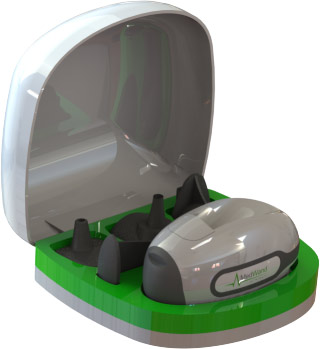
By Gary M. Kaye
Chief Content Officer, Tech50+ (www.tech50plus.com)
Every day you can find lots of new articles about the benefits of connected healthcare. How it will prevent unnecessary re-hospitalizations, reduce health care costs, improve outcomes. And for snowbirds, it will allow us to keep our current doctors no matter where we roam. Yet the reality is that not only is connected healthcare anything but ubiquitous, it is fraught with serious disconnects.
Here are just a couple of examples: Healthcare insurance giant Cigna is no longer routinely paying for blood sugar test strips for the popular TelCare wireless blood glucose meter, European industrial behemoth Royal Philips introduced a line of consumer oriented medical grade connected devices such as blood pressure cuff, wireless scale, and smartwatch that only connect with each other and cannot send data to caregivers or health care providers (though Philips does have a line of professionally prescribed connected devices); Medtronics implantable heart monitors are routinely sending out data to the cloud, but no one is monitoring the monitors in real time. The list goes on.
Elsewhere in the healthcare system, communications systems are still in the dark ages. Many health care providers will not transmit prescriptions or other data via email for reasons of security, privacy, or lack of technology. The result is that here we are in 2017 and the primary way of moving this data around is via fax machine. Really.
There are several fundamental issues delaying deployment. Who is going to pay for these devices? Will it be the government, insurers or consumers? And then who is going to look at the data? The technology for keeping track of the data from heart monitors and blood glucose monitors is not even close to keeping up with the volume of data these devices provide. And few institutions have any kind of management by exception monitoring that would alert a health care provider or caregiver in the event readings were outside of the norms.
But there are also signs of progress. The Food and Drug Administration is starting to approve these devices more expeditiously. Medicare and some private insurers have begun reimbursing doctors for video visits. I've used my iPad to visit with my team at Yale New Haven hospital, a process that saved me several hours. What's more, it means that wherever I travel I'm no more than a couple of clicks away from seeing a live provider who can, at least in some fashion, look me over remotely and in real time. Video visits and telehealth have obvious benefits for both non-mobile chronic populations such as those with COPD or congestive heart failure, as well as those of us who are healthy enough to travel and want to stay connected to our existing providers.
Top Down or Bottom Up?
In terms of connected health care devices, 2017 could be a breakthrough year. Several FDA approved products are expected to debut in the coming months. But manufacturers are still grappling with the question of whether healthcare providers will ask their patients to use them (some do), or whether consumers will go out and buy devices and then try to get providers to accept their data. That's why companies like TytoCare are pursuing both a top down and a bottom up strategy. Tyto has FDA approval for a single diagnostic device enabling live, remote patient examinations of the ears, nose, throat, skin, heart and temperature. Tyto's Chief Revenue Officer, Jeff Cutler tells me that in early 2017 the company will be rolling out a professional version, TytoCare Pro, aimed at caregivers in an institutional setting. For example, it will enable a nurse in a nursing home to send real time observations to a doctor at another location. The difference between the TytoPro version and its consumer, called TytoHome, will primarily be in the software and backend capabilities. The company hopes that by sometime later in the year it will start rolling out the consumer version on Amazon, as well as on the store shelves of pharmacies for about $300. Tyto thinks this will be ideal for parents with small children, as well as seniors who want to get diagnostics to their providers in real time.
Another device, MedWand, with many of the same functions is still awaiting FDA approval, expected sometime this coming year.
French company BeWellConnect is coming into the U.S. marketplace with a suite of nine devices including electrocardiogram, blood glucose monitor, blood pressure cuff, connected scale, thermometer and others that will all connect with a smartphone app and allow you to transmit information to your doctor or caregiver. It’s also expected to unveil an all-in-one diagnostic device. Company CEO Olivier Hua tells me BeWellConnect is also taking a dual prong approach, trying to win adoption by healthcare providers before moving to direct consumer sales.
We expect to see a host of new devices unveiled at the big CES consumer electronics show in Las Vegas in early January. And even though the manufacturers are still coping with the chicken and egg question of who will pay, it seems that after years of teasing, consumers will have some real options in telehealth connectivity in the months ahead.
Gary Kaye is the creator of Tech50+ (www.tech50plus.com), the leading website covering technology from the Baby Boomer perspective. Kaye has been covering high tech for more than 30 years with outlets including NBC, ABC, CNN and Fox Business. He is a regular contributor to AARP and other websites on issues regarding the nexus of technology, seniors and baby boomers.